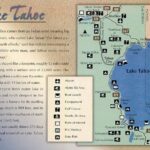Introduction
The Conservancy of Southwest Florida is a prominent environmental organization dedicated to protecting the region’s unique ecosystems, wildlife, and natural resources. Established in 1964, the Conservancy has been at the forefront of conservation efforts in Southwest Florida, working tirelessly to promote sustainability, education, and environmental stewardship. This article delves into the latest news and developments from the Conservancy, highlighting its ongoing projects, achievements, and the challenges it faces in preserving one of the most ecologically diverse areas in the United States.
Mission and Vision
The mission of the Conservancy of Southwest Florida is to protect Southwest Florida’s water, land, wildlife, and future through science, policy, education, and advocacy. Its vision is a sustainable Southwest Florida where natural areas are preserved, urban growth is balanced, and communities are engaged in environmental stewardship. These guiding principles have driven the organization’s initiatives and programs for over five decades, making a significant impact on the region’s environmental landscape.
Recent Initiatives and Achievements
1. Water Quality and Restoration Projects
Water quality is a critical concern in Southwest Florida, where ecosystems like the Everglades and coastal estuaries depend on clean, balanced waters. The Conservancy has been actively involved in several water quality and restoration projects aimed at reducing pollution, restoring natural flow patterns, and improving the health of aquatic habitats.
One of the notable initiatives is the “Caloosahatchee River and Estuary Restoration Project.” This project focuses on mitigating the harmful effects of nutrient runoff and freshwater discharges that have plagued the Caloosahatchee River and its estuary. By working with local stakeholders, policymakers, and scientists, the Conservancy aims to restore the river’s ecological balance and ensure a sustainable future for the species that rely on this vital waterway.
2. Land Conservation Efforts
Land conservation is another cornerstone of the Conservancy’s work. The organization has successfully preserved thousands of acres of critical habitats through land acquisition, conservation easements, and partnerships with private landowners and governmental agencies.
Recently, the Conservancy celebrated the acquisition of a significant parcel of land in the “Corkscrew Regional Ecosystem Watershed (CREW).” This area is crucial for protecting water resources, providing habitat for wildlife, and maintaining the region’s biodiversity. The acquisition not only safeguards these ecological values but also offers opportunities for public recreation and environmental education.
3. Wildlife Protection Programs
Southwest Florida is home to a diverse array of wildlife, including several endangered and threatened species. The Conservancy’s wildlife protection programs focus on habitat preservation, species monitoring, and mitigating human-wildlife conflicts.
The “Sea Turtle Monitoring and Protection Program” is one of the flagship wildlife initiatives. Every year, the Conservancy’s team of biologists and volunteers monitor nesting beaches, protect nests from predators and human disturbance, and collect data to inform conservation strategies. This program has been instrumental in increasing the hatching success rates of sea turtles, a species that faces numerous threats in its lifecycle.
4. Policy and Advocacy
Effective conservation requires robust policies and informed advocacy. The Conservancy’s policy and advocacy team works tirelessly to influence environmental legislation, land-use planning, and regulatory frameworks that impact Southwest Florida’s natural resources.
A recent advocacy success story is the passage of stricter water quality regulations aimed at reducing nutrient pollution from agricultural runoff. The Conservancy’s persistent efforts in raising awareness, mobilizing community support, and engaging with policymakers played a crucial role in this legislative achievement, which promises long-term benefits for the region’s water bodies.
Challenges and Future Directions
Despite its numerous successes, the Conservancy of Southwest Florida faces ongoing challenges in its mission to protect the region’s environment. Urbanization, climate change, and funding constraints are among the primary obstacles that require strategic and innovative approaches.
1. Urbanization and Habitat Loss
The rapid pace of urbanization in Southwest Florida poses a significant threat to natural habitats and wildlife corridors. As cities and towns expand, the pressure on green spaces and undeveloped lands intensifies, leading to habitat fragmentation and loss of biodiversity.
To address this challenge, the Conservancy is advocating for smarter growth policies that balance development with conservation. By promoting the use of green infrastructure, advocating for the protection of critical habitats in urban planning, and working with developers to incorporate conservation principles, the Conservancy aims to mitigate the impacts of urbanization.
2. Climate Change
Climate change is an overarching threat that exacerbates many existing environmental issues. Rising sea levels, increased frequency of extreme weather events, and changing temperature and precipitation patterns pose risks to Southwest Florida’s ecosystems and communities.
The Conservancy is actively involved in climate resilience initiatives, including the restoration of mangroves and wetlands that act as natural buffers against storm surges and flooding. Additionally, the organization is working on climate adaptation strategies to help wildlife and habitats cope with the changing conditions.
3. Funding and Resource Constraints
Securing sufficient funding and resources is a constant challenge for non-profit organizations like the Conservancy. The scope and scale of conservation projects often require substantial financial investments, which can be difficult to sustain through grants and donations alone.
To overcome this hurdle, the Conservancy is exploring innovative funding mechanisms such as conservation finance, partnerships with the private sector, and community-based fundraising campaigns. These efforts aim to diversify funding sources and ensure the long-term sustainability of conservation programs.
Community Engagement and Education
A key component of the Conservancy’s work is engaging the community and fostering a culture of environmental stewardship. Through educational programs, volunteer opportunities, and public outreach, the Conservancy inspires individuals of all ages to take an active role in protecting Southwest Florida’s natural heritage.
The “Nature Center” at the Conservancy’s headquarters serves as a hub for environmental education. Visitors can explore interactive exhibits, participate in guided nature walks, and attend workshops on topics ranging from wildlife conservation to sustainable living. By connecting people with nature and providing hands-on learning experiences, the Conservancy nurtures a deeper appreciation for the environment and empowers individuals to make a positive impact.
Conclusion
The Conservancy of Southwest Florida stands as a beacon of hope and action in the face of environmental challenges. Its comprehensive approach, combining science, policy, education, and community engagement, has yielded remarkable achievements in protecting the region’s water, land, and wildlife. As the Conservancy continues to adapt and innovate, its commitment to preserving Southwest Florida’s natural beauty and ecological integrity remains steadfast. By supporting the Conservancy’s efforts, we can all contribute to a sustainable and thriving future for this precious corner of the world.







